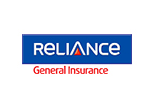Motor Insurance Constructive Total Loss Explained
Constructive Total Loss is extensive damage incurred by the vehicle for which repair liability exceeds 75% of the IDV of the vehicle. Find all you need to know about a constructive total loss.
When it comes to motor insurance, a term that is often not entirely understood is Constructive Total Loss. This article will deep dive into the definition of constructive total loss, its example for the ease of your understanding, how it is different from total loss and some frequently asked questions.

What is Constructive Total Loss?
Constructive Total Loss in motor insurance refers to the damage which is so extreme that no repair would be equal or be able to surpass the cost of the vehicle insurance limit or the vehicle itself. This type of loss is usually observed when there is a head-on collision between two or more vehicles, total wreck, or when an older vehicle is damaged which has little or barely any book value.
In simple words, when the loss of a vehicle is 100% of its current market value, it is considered as Constructive Total Loss. It is important to note that the insurer only pays the amount in this case which is based on the IDV or Insured Declared Value after subtracting the deductibles (excess).
Let’s take an example to understand the term better.
Suppose Ria and Kartik are two individuals in two different cars travelling in opposite directions. Both Ria and Kartik’s cars have a head-on collision and Kartik’s car is in a condition beyond repair. In this case his vehicle will be in a state of constructive total loss. The insurer will give him the financial support only till the amount as per his IDV.
Types of Car Insurance Claims
Car insurance includes two types of insurance claims, which are as follow:
1. Third Party Insurance Claim
The third-party car insurance plan is an agreement between an insurance company and policyholder, where the insurer promises to compensate the policyholder’s financial liability incurred towards a third party for injuries, disability compensation, death or property damage caused due to an accident with the insurer vehicle. If a third party has suffered due to an accident with your vehicle, you should immediately convey it to the police and your insurer. Whereas, if you are the third party, then you must own all the information and details pertaining to the insured vehicle and claim the incident ahead.
2. Own-Damage Insurance Claim
The own-damage car insurance plan is an agreement between an insurance provider and policyholder, where the former promises to cover the insured vehicle of the latter if it gets damaged in an accident or stolen. In the case of an accident, the policyholder must try to click photos and shoot video of the spot and vehicle and immediately report to police and insurance companies at the earliest. Also, in case of theft, you need to inform the police and insurer and should be ready with all the necessary details as delay in intimating about a theft claim can even get your claim rejected.
Where Does Constructive Total Loss Fit In?
The constructive total loss can be claimed for a third-party insurance claim as well as an own-damage insurance claim. The CTL is applicable in accidents that cause severe damage to your vehicle which can cost the liability on repairs more than 75 percent of the Insured's Declared Value . For such claims, a surveyor comes to inspect the vehicle damages and tries to measure the incurred loss before declaring it a constructive total loss.
What if the Car Insurance Claim Is Declared Constructive Total Loss?
When it comes to situations where the insured vehicle sustains severe damages and its repair costs more than 75 percent of the Insured Declared Value (IDV), the policyholder declares it a constructive total loss. In such cases, the ownership of the vehicle is transferred to the insurance company and you are required to surrender the keys of the vehicle and documents to the insurance company. After this, the insurance company pays the insured declared value to the policyholder after making a deduction for excess expenses. Once the claim settlement is completed, the insurance plan will automatically expire and you need not pay its premiums anymore.
How Constructive Total Loss Is Different From Total Loss?
In car insurance, the total loss is declared when a vehicle is damaged to an extent of beyond repair. It means that the vehicle could not be restored to the condition as it used to be before the accident. On the other hand, a constructive total loss is stated when the vehicle is damaged severely and can be repaired to its previous condition but the liability on repairs will be exceeding 75% of the IDV of the vehicle. In such conditions, the insurer examines the damages and accesses the cost of damage repairs. Under the situation of a constructive total loss, the repair would cost much higher than the costs of buying a new one.
FAQs
What is the correct statement for constructive total loss?
Ans. A scenario when the cost of repair or retrieval of a vehicle is higher than its current market value.
What is the full form of IDV?
Ans. IDV stands for Insured Declared Value. It is the maximum amount your insurer will pay for your vehicle damage or repair.
How much money will I get if my car is a constructive total loss?
Ans. You will get the amount as per mentioned in your IDV or Insured Declared Value.
What is OD and TP in insurance?
Ans. OD stands for SAOD or stand alone own damage insurance while TP stands for third party liability insurance. In case of SAOD, you get your own vehicle insured, whereas TP is mandatory as per law and it secures you financially and legally in case of damage or injury due to your vehicle caused to a third party property or person.
Can I claim insurance for car scratches?
Ans. Yes, you can claim insurance for car scratches and dents. However, we advise you otherwise since making minor or multiple claims can lead to an increase in your next car insurance during renewal. This also means you will be losing your No Claim Bonus (NCB).
Also Read:
How To File Car Insurance Claim After An Accident?
Significance of Different Car Insurance Add-Ons
Disclaimer: This article is issued in the general public interest and meant for general information purposes only. Readers are advised not to rely on the contents of the article as conclusive in nature and should research further or consult an expert in this regard.














































